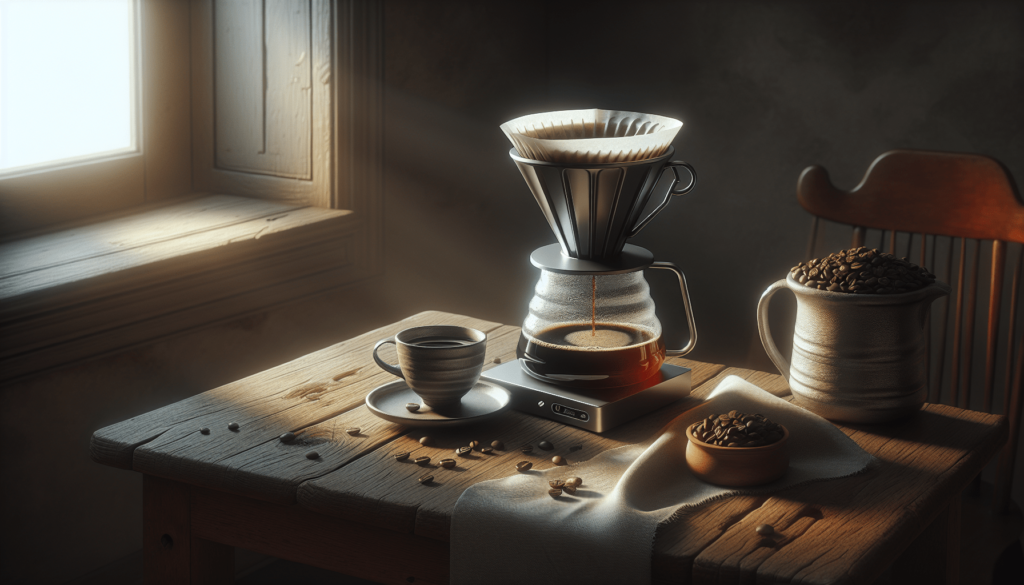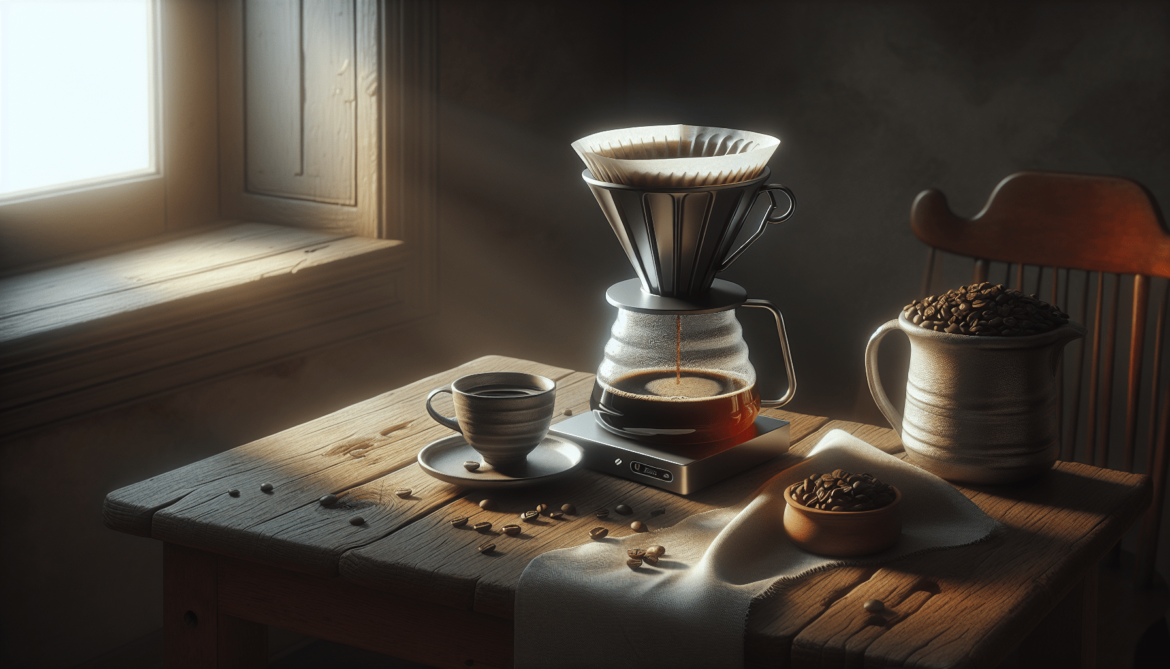What’s your favorite way to brew a cup of coffee? If you’re someone who enjoys crafting the perfect cup, you’re in for a treat. Brewing methods can vastly impact the flavor and aroma of your coffee. Let’s break down some of the best brewing methods available, so you can find the one that suits your taste the best.
The Art and Science of Brewing Coffee
Brewing coffee is both an art and a science. It involves careful measurement of coffee grounds, water temperature, and brewing time. Your choice of brewing method can either enhance or dull those rich flavors. Understanding each technique will help you brew coffee that aligns with your preferences.
Why Brewing Method Matters
The method you select often defines the ultimate taste of your coffee. Variations in extraction, grind size, and water contact time create different flavor profiles. By adjusting these factors, you can achieve a multitude of coffee experiences from the same beans.
Traditional Methods of Brewing Coffee
Let’s start with some traditional methods that many coffee lovers swear by. These methods are widely used and have stood the test of time.
Drip Coffee Maker
Overview
The drip coffee maker is likely one of the most common brewing methods in households across the world. This appliance automates the process of water passing through coffee grounds, producing a clean, consistent cup.
How It Works
- Water Reservoir: You fill a reservoir with water.
- Heating Element: The machine heats the water.
- Coffee Grounds: Coffee grounds are placed in a paper or metal filter.
- Dripping: Hot water drips over the grounds, extracting flavors before trickling into a carafe.
Pros and Cons
| Pros | Cons |
|---|---|
| Convenient and automated | Can lack depth in flavor |
| Great for making multiple cups | May be limited in brewing control |
French Press
Overview
The French press offers a hands-on approach to brewing coffee. It’s known for producing a rich, full-bodied cup that many coffee aficionados appreciate.
How It Works
- Coarse Grinding: Begin with coarsely ground coffee.
- Hot Water: Add hot water and let it steep for about four minutes.
- Pressing: Use the plunger to separate the coffee grounds from the brewed coffee.
Pros and Cons
| Pros | Cons |
|---|---|
| Full-bodied flavor | Sediment can remain in the cup |
| Simple and affordable | Requires proper timing for extraction |
Pour-Over
Overview
Pour-over brewing puts you in control of the extraction process. It’s a favorite for those who appreciate the nuances in flavor and aroma.
How It Works
- Filter Setup: Place a filter in the dripper and add coffee grounds.
- Pour Water: Slowly pour hot water over the grounds in a circular motion, allowing for even saturation.
- Extraction: Let the water drain through the coffee into your cup or carafe.
Pros and Cons
| Pros | Cons |
|---|---|
| Excellent control over brewing variables | Time-consuming |
| Enhanced flavor clarity | Requires practice |

Alternative Brewing Methods
While traditional methods offer quality results, alternative brewing methods expand your options and can introduce unique flavors.
AeroPress
Overview
The AeroPress is a compact, portable brewing method that produces coffee similar to espresso. It’s perfect for anyone who enjoys experimenting with their brews.
How It Works
- Ground Coffee: Add fine grounds into the chamber.
- Hot Water: Pour hot water over the coffee and stir.
- Pressing: Place the filter cap on and press the plunger slowly.
Pros and Cons
| Pros | Cons |
|---|---|
| Quick brewing process | Can produce a strong flavor |
| Portable for travel | Requires a bit of technique |
Cold Brew
Overview
Cold brew is a method that extracts coffee flavors without heat. It results in a smoother, less acidic cup that’s refreshing, especially during warm months.
How It Works
- Coarse Grounds: Use coarsely ground coffee.
- Water Infusion: Combine coffee and cold water in a jar and steep for 12-24 hours.
- Strain: Filter the mixture to remove grounds.
Pros and Cons
| Pros | Cons |
|---|---|
| Smooth and refreshing | Requires long steeping time |
| Lower acidity | Less complex flavor profile |
Specialty Brewing Methods
If you’re looking for something out of the ordinary, specialty brewing methods might pique your interest.
Siphon Coffee
Overview
Siphon coffee brewing is a theatrical process that creates a unique cup of coffee. It uses vapor pressure to brew, resulting in a clean and aromatic coffee.
How It Works
- Water Heating: Heat water in the bottom chamber until vapor pressure pushes it to the top chamber.
- Coffee Addition: Add coffee grounds to the top and stir.
- Cooling: Remove heat, and the brewed coffee returns to the bottom.
Pros and Cons
| Pros | Cons |
|---|---|
| Strong presentation | More involved process |
| Clean and aromatic flavor | Requires specialized equipment |
Turkish Coffee
Overview
Turkish coffee is a traditional brewing method that creates a rich, thick cup. It’s often served sweetened and can be flavored with spices.
How It Works
- Finely Ground Coffee: Combine finely ground coffee and water in a cezve (small pot).
- Boil: Heat slowly until it froths, then take it off the heat.
- Serve: Pour into a cup, allowing grounds to settle.
Pros and Cons
| Pros | Cons |
|---|---|
| Strong and unique flavor | Sediment in the cup |
| Social brewing experience | Requires a specific grind size |

Choosing Your Brewing Method
As you navigate through these various brewing methods, consider the following factors to help make your decision:
Flavor Profile
Think about the type of flavor you enjoy in your coffee. Are you looking for something smooth and mellow, or do you prefer a bold, intense brew? Different methods will emphasize different flavor elements.
Convenience and Time
How much time do you want to spend brewing? Using a drip coffee maker or an AeroPress might be quicker and more convenient. If you enjoy the ritual of brewing, methods like pour-over or French press can be rewarding, albeit time-consuming.
Equipment and Investment
Take a moment to consider what equipment you already own and what you’re willing to invest in. Some methods, like the siphon or espresso machine, require a more significant financial commitment than others.
Experimentation
Don’t be afraid to experiment with multiple brewing techniques. Each method can yield different results from the same beans, and that discovery process can be part of the fun.
Conclusion
In summary, the world of coffee brewing is rich and diverse. With each method offering its unique flavor profile and experience, finding the one that resonates with you can be a rewarding journey. Whether you stick with a reliable drip coffee maker, delve into the intricacies of pour-over, or even try your hand at the theatrical siphon method, you’re setting yourself up for coffee enjoyment.
So, the next time you brew yourself a cup, consider trying a different method or refining your technique with the one you love. With a little experimentation and practice, you’ll be on your way to becoming your very own barista at home, ensuring every cup is a delightful experience. Happy brewing!
